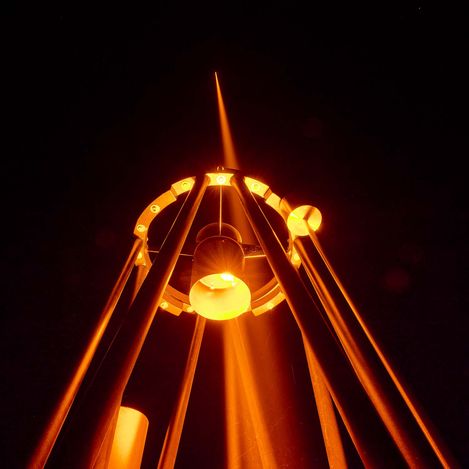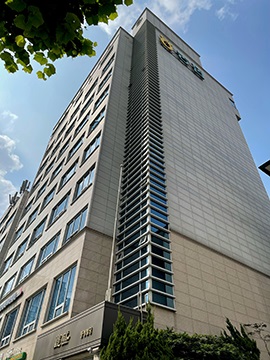
Photonics News: Week in Brief: 09/03/21
MUNICH — TOPTICA Photonics’ TOPTICA Projects has successfully tested an experimental laser, jointly developed with the European Southern Observatory (ESO), MPB Communications (MPBC), and High Finesse, at the Allgäuer Volkssternwarte Ottobeuren observatory in Germany. The higher laser power and its chirping system will lead to significant improvements in the sharpness of astronomical images taken with ground-based telescopes, TOPTICA said, and the technology opens the door for developments in laser satellite communication. The laser will be installed at the European Space Agency’s (ESA) Optical Ground Station in Tenerife, Spain, in the frame of the ESO-ESA research and development collaboration.
MPBC developed the laser's 100 W CW 1178 nm, single-mode, single frequency, linearly polarized Raman fiber amplifier; the 100 W CW 1178 nm unit uses a two-stage polarization-maintaining (PM) RFA counter-pumped by a PM 1120-nm fiber laser to amplify a linearly-polarized 15-mW narrow-linewidth 1178 nm "seed" laser.
The full adaptive optics system will serve as a “guide star,” a type of laser that excites sodium atoms in Earth’s atmosphere to create an artificial star used as a reference point to correct blurring caused by atmospheric turbulence. The narrow-band highest optical-quality laser power of 63 W, locked to the sodium wavelength, is a leap forward compared to current astronomy laser technology, TOPTICA said. The experimental frequency chirping system is targeted to also improve the signal-to-noise of the system.

TOPTICA’s guide star laser. Courtesy of TOPTICA Photonics.
SEOUL, South Korea — Edmund Optics will relocate its regional South Korea office to a larger facility in the Mapo district of Seoul. The 264-sq-m (866-ft) office will facilitate enhanced services, a lab for specialized technical support, and easy access for visits. Under the leadership of Seheon Kim, the new facility will focus on support from skilled engineers, while also driving innovations and providing further expansion into additional markets, product lines, and services.

Edmund Optics South Korea is now located in the Mapo district of Seoul. Courtesy of Edmund Optics.
ADELAIDE, Australia — The University of South Australia (UniSA) was awarded a 1.8 million AUD ($1.3 million) contract with the federal government to develop technology that underpins the next generation of high-powered lasers in Australia for the defense and manufacturing sectors. David Lancaster, a UniSA professor of laser engineering, will lead the three-year project funded by the Defence Science and Technology Group in collaboration with the University of Adelaide. “High-powered lasers are increasingly being used in defense and manufacturing, but despite a long history of developing lasers in Australia, our technology is still relatively immature compared to other countries,” Lancaster said. As a result, Australia has had to buy from other countries, which, he said, is restrictive; most nations limit their exports of lasers. Lancaster specifically aims to build a new type of high-powered laser that combines multiple smaller lasers, fine-tuning the manufacturing process so it is cheaper and more efficient.
BLOOMINGTON, Minn. — Skywater Technology will work with Carillon Technologies to produce solid-state holographic optical beam steering (HOBS) chips for satellite and other free-space optical communications applications. HOBS technology was invented and is being developed for automotive lidar applications by Carillon partner Lumotive. In partnership with DARPA (Defense Advanced Research Projects Agency), Carillon is onshoring HOBS technology, standing up a complete design manufacturing, packaging, and test supply chain in the United States so the technology can be manufactured for commercial, space, and national security applications.
AMHERST, Mass. — The University of Massachusetts Amherst has received a $3.4 million grant to develop a portable optical sensor for the detection of brain injuries. The system, to be developed by a team led by Nianqiang Wu, consists of an ultrasensitive test strip and a portable optical reader to record the results. A drop of the victim’s blood from a finger prick is applied to the test strip and then fed into the diagnostic reader. Results will be supplied within 25 minutes, Wu estimated. The total direct and indirect costs for traumatic brain injuries treatment are estimated to be $60 billion annually in the U.S.

Nianqiang Wu, the Armstrong-Siadat Endowed Professor in Chemical Engineering at UMass Amherst. Courtesy of UMass Amherst.
DUBLIN, Calif. — Adaptive high-performance lidar company AEye has partnered with Benchmark Electronics, a provider of engineering, design, and manufacturing services. Benchmark will ensure the quality and reliability of AEye’s 4Sight lidar sensors while rapidly scaling manufacturing to meet volume production needs. The partnership focuses specifically on manufacturing critical optical components and modules in AEye’s sensors targeted for a broad range of industrial markets.
KIRCHDORF, Sweden — Photolithography equipment and services provider Eulitha and semiconductor and advanced technology manufacturer VDL ETG will increase their cooperation in the manufacturing of photolithography equipment. The cooperation targets further development and manufacturing of state-of-the-art tools for high-volume manufacturing of photonic components such as AR/VR waveguides.
CAMBRIDGE, England — Life science equipment company Ziath has opened a new office near Maastricht, Netherlands. The office will be headed by Wilbert Lennartz, who seeks to further expand Ziath’s coverage with direct sales and knowledgeable support to customers across the Benelux region and northern France. The office will be able to accept and process orders and payments with efficiency and lower costs for a post-Brexit market. The office began operations Sept. 1.
NEW BRITAIN, Conn. — MicroCare LLC, a supplier of cleaning fluids and materials used in fiber optics, electronics, medical device manufacturing, and metal finishing markets, has acquired Certol International, a Denver-based manufacturer of specialty cleaning and disinfecting products to the medical, dental, and consumer marketplaces. The acquisition will strengthen MicroCare’s position in high-growth areas such as fiber optics, automotive, medical, and electronics.
The lead news item in this posting has been edited.
/Buyers_Guide/TOPTICA_Photonics_Inc/c15103
/Buyers_Guide/Edmund_Optics_Inc/c4064
/Buyers_Guide/SkyWater_Technology_Foundry/c31772
/Buyers_Guide/AEye_Inc/c31307
/Buyers_Guide/Benchmark_Electronics/c18197
/Buyers_Guide/Eulitha_AG/c30797
/Buyers_Guide/Ziath_Ltd/c31954
Published: September 2021
Glossary
- photolithography
- Photolithography is a key process in the manufacturing of semiconductor devices, integrated circuits, and microelectromechanical systems (MEMS). It is a photomechanical process used to transfer geometric patterns from a photomask or reticle to a photosensitive chemical photoresist on a substrate, typically a silicon wafer.
The basic steps of photolithography include:
Cleaning the substrate: The substrate, often a silicon wafer, is cleaned to remove any contaminants from its surface.
...
- lidar
- Lidar, short for light detection and ranging, is a remote sensing technology that uses laser light to measure distances and generate precise, three-dimensional information about the shape and characteristics of objects and surfaces. Lidar systems typically consist of a laser scanner, a GPS receiver, and an inertial measurement unit (IMU), all integrated into a single system.
Here is how lidar works:
Laser emission: A laser emits laser pulses, often in the form of rapid and repetitive laser...
- machine vision
- Machine vision, also known as computer vision or computer sight, refers to the technology that enables machines, typically computers, to interpret and understand visual information from the world, much like the human visual system. It involves the development and application of algorithms and systems that allow machines to acquire, process, analyze, and make decisions based on visual data.
Key aspects of machine vision include:
Image acquisition: Machine vision systems use various...
BusinessNews in BriefLasersOpticsSensors & Detectorslife sciencespectroscopyphotolithographyEuropenew facilitynew officefacility openingacquisitionsmergers & acquisitionsBiophotonicsmanufacturingpartnershipcollaborationoptical beam steering holographic optical beam steeringHOBSUniversity of South AustraliaEdmund OpticsUMass AmherstZiathNautiluslidarAEyeSkywater TechnologyToptica Photonicsguide starfiber optics & communicationImagingmachine vision